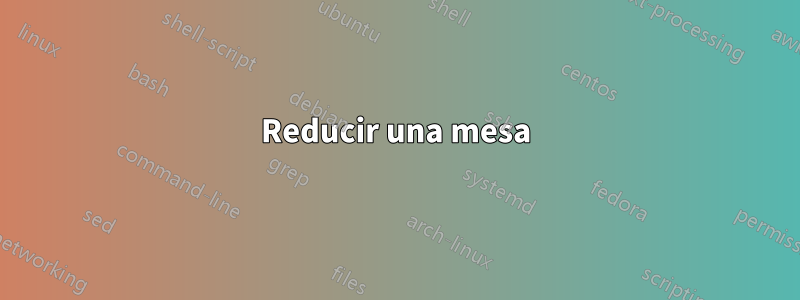
Estoy en el proceso de escribir mi tesis y tengo tablas de regresión bastante largas, lo que significa que solo puedo colocar un espacio limitado de texto en una página. ¿Hay alguna manera de mover la tabla más arriba en la página y también reducirla, permitiendo más texto explicativo?
\documentclass[11pt]{article}
\usepackage[utf8]{inputenc}
\usepackage[T1]{fontenc}
\usepackage{amsmath,amsfonts,amssymb}
\usepackage{booktabs}
\usepackage{dcolumn}
\usepackage{mathtools}
\usepackage{graphicx}
\usepackage[utf8]{inputenc}
\usepackage{rotating}
\usepackage{adjustbox}
\usepackage{tabularx}
\usepackage[margin=35mm]{geometry}
\usepackage{titlesec}
\usepackage{siunitx} % added
\usepackage{threeparttable}
\newcommand\mc[1]{\multicolumn{1}{c}{#1}}
\titleformat*{\subsection}{\normalfont\large\itshape}
\makeatletter
\renewcommand\footnoterule{
\kern-3\p@
\hrule\@width \textwidth
\kern2.6\p@}
\makeatother
\usepackage{rotating}
\begin{document}
\section{Results}\label{Results}
\subsection{Objective 1}
\begin{table}[htbp]\centering
\def\sym#1{\ifmmode^{#1}\else\(^{#1}\)\fi}
\caption{Investment on Bribes: Pooled Sample table\label{tab1}}
\begin{tabular*}{0.7\columnwidth}{@{\hskip\tabcolsep\extracolsep\fill}l*{1}
{D{.}{.}{-1}}}
\toprule
&\multicolumn{1}{c}{(1)}\\
&\multicolumn{1}{c}{ln\_invest}\\
\midrule
Bribes& 0.008 \\
& (0.0136) \\
\addlinespace
Medium(20-99) & 0.529 \\
& (0.267) \\
\addlinespace
Large(100 and over) & 2.171\sym{***}\\
& (0.460) \\
\addlinespace
Government & 0.427 \\
& (0.435) \\
\addlinespace
Foreign & -0.337 \\
& (0.257) \\
\addlinespace
Fincons & 0.107 \\
& (0.154) \\
\addlinespace
Court & -0.168 \\
& (0.148) \\
\addlinespace
lnAge & 0.069 \\
& (0.242) \\
\addlinespace
Constant & 9.976\sym{***}\\
& (0.574) \\
\addlinespace
Year Dummies & \multicolumn{1}{c}{YES}\\
\addlinespace
Industry Dummies & \multicolumn{1}{c}{YES}\\
\addlinespace
Missing Year Dummy & \multicolumn{1}{c}{YES}\\
\addlinespace
\midrule
Observations & \multicolumn{1}{c}{6417} \\
\bottomrule
\multicolumn{2}{l}{\footnotesize \sym{*} \(p<0.05\), \sym{**} \(p<0.01\),
\sym{***} \(p<0.001\)}\\
\multicolumn{2}{l}{\footnotesize Note: Robust standard errors in
parentheses, clustered by Country}\\
\end{tabular*}
\end{table}
The first model estimated, as shown in T, is the most basic form of the mechanism investigated. When controlling for industry and year effects, I find a positive relationship between corruption and bribery, although this result is statistically not significant. Results suggest that for a $1\%$ increase in bribe, this increases ln\_invest by 0.8 percentage points. This positive relationship contradicts our initial hypothesis of bribery
\end{document}
Respuesta1
\documentclass[11pt]{article}
\usepackage[utf8]{inputenc}
\usepackage[T1]{fontenc}
\usepackage{amsmath,amsfonts,amssymb}
\usepackage{booktabs}
\usepackage{dcolumn}
\usepackage{mathtools}
\usepackage{graphicx}
\usepackage[utf8]{inputenc}
\usepackage{rotating}
\usepackage{adjustbox}
\usepackage{tabularx}
\usepackage[margin=35mm]{geometry}
\usepackage{titlesec}
\usepackage{siunitx} % added
\usepackage{threeparttable}
\newcommand\mc[1]{\multicolumn{1}{c}{#1}}
\titleformat*{\subsection}{\normalfont\large\itshape}
\makeatletter
\renewcommand\footnoterule{
\kern-3\p@
\hrule\@width \textwidth
\kern2.6\p@}
\makeatother
\usepackage{rotating}
\begin{document}
\section{Results}\label{Results}
\subsection{Objective 1}
\begin{table}[htbp]\centering
\def\sym#1{\ifmmode^{#1}\else\(^{#1}\)\fi}
\caption{Investment on Bribes: Pooled Sample table\label{tab1}}
\begin{tabular*}{0.7\columnwidth}{@{\hskip\tabcolsep\extracolsep\fill}l*{2}
{D{.}{.}{-1}}}
\toprule
\multicolumn{3}{c}{(1)}\\
&\multicolumn{2}{c}{ln\_invest}\\
\midrule
Bribes& 0.008 & (0.0136) \\
Medium(20-99) & 0.529 & (0.267) \\
Large(100 and over) & 2.171\sym{***} & (0.460) \\
Government & 0.427 & (0.435) \\
Foreign & -0.337 & (0.257) \\
Fincons & 0.107 & (0.154) \\
Court & -0.168 & (0.148) \\
lnAge & 0.069 & (0.242) \\
Constant & 9.976\sym{***} & (0.574) \\
\addlinespace
Year Dummies & \multicolumn{2}{c}{YES}\\
Industry Dummies & \multicolumn{2}{c}{YES}\\
Missing Year Dummy & \multicolumn{2}{c}{YES}\\
\midrule
Observations & \multicolumn{1}{c}{6417} \\
\bottomrule
\multicolumn{3}{l}{\footnotesize \sym{*} \(p<0.05\), \sym{**} \(p<0.01\),
\sym{***} \(p<0.001\)}\\
\multicolumn{3}{l}{\footnotesize Note: Robust standard errors in
parentheses, clustered by Country}\\
\end{tabular*}
\end{table}
The first model estimated, as shown in T, is the most basic form of the mechanism investigated. When controlling for industry and year effects, I find a positive relationship between corruption and bribery, although this result is statistically not significant. Results suggest that for a $1\%$ increase in bribe, this increases ln\_invest by 0.8 percentage points. This positive relationship contradicts our initial hypothesis of bribery
\end{document}
Respuesta2
diferencia conDavid CarlisleLa respuesta es que exploto paquetes threeparttabley siunitx, no uso ninguna de las definiciones de OP (su propósito no me queda claro), cambio ligeramente la definición \mcque ahora se usa en la tabla y, desde el preámbulo, mantengo solo el paquete usado en la tabla:
\documentclass[11pt]{article}
\usepackage[margin=35mm]{geometry}
\usepackage[utf8]{inputenc}
\usepackage[T1]{fontenc}
%\usepackage{mathtools,amsfonts,amssymb}
\usepackage{booktabs, threeparttable}
\newcommand\mc[1]{\multicolumn{2}{c}{#1}}% <-- changed
\usepackage{siunitx}
\begin{document}
\begin{center}
\begin{threeparttable}[htb]
\caption{Investment on Bribes: Pooled Sample table}
\label{tab1}
\sisetup{ table-space-text-pre ={(},
table-space-text-post={\textsuperscript{***}},
table-align-text-pre=false,
table-align-text-post=false,
explicit-sign,
input-open-uncertainty={[},
input-close-uncertainty={]}
}
\begin{tabular*}{0.6\linewidth}{l S[table-format=-1.4] S[table-format=1.4]}
\toprule
& \mc{(1)} \\
& \mc{ln\_invest} \\
\midrule
Bribes & 0.008
& (0.0136) \\
Medium(20-99) & 0.529
& (0.267) \\
Large(100 and over) & 2.171\tnote{***}
& (0.460) \\
Government & 0.427
& (0.435) \\
Foreign & -0.337
& (0.257) \\
Fincons & 0.107 \\
& (0.154) \\
Court & -0.168
& (0.148) \\
lnAge & 0.069
& (0.242) \\
Constant & 9.976\tnote{***}
& (0.574) \\
Year Dummies & \mc{YES} \\
Industry Dummies & \mc{YES} \\
Missing Year Dummy & \mc{YES} \\
\midrule
Observations & \mc{6417} \\
\bottomrule
\end{tabular*}\scriptsize\raggedright\smallskip
\begin{tablenotes}[para, flushleft]
\item[*] \(p<0.1\)
\item[**] \(p<0.01\)
\item[***] \(p<0.001\)
\end{tablenotes}
Note: Robust standard errors in parentheses, clustered by Country
\end{threeparttable}
\end{center}
The first model estimated, as shown in T, is the most basic form of the mechanism investigated. When controlling for industry and year effects, I find a positive relationship between corruption and bribery, although this result is statistically not significant. Results suggest that for a $1\%$ increase in bribe, this increases ln\_invest by 0.8 percentage points. This positive relationship contradicts our initial hypothesis of bribery
\end{document}





